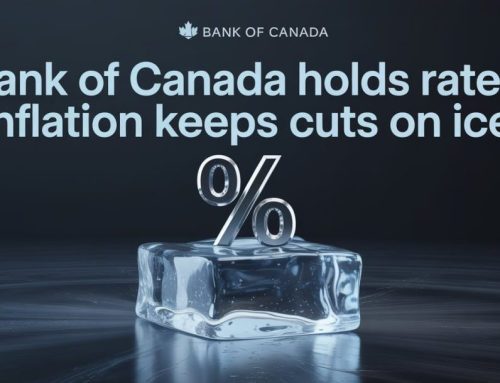There are many mortgage professionals who have a specific stance when advising their clients on the choice between fixed and variable rate mortgages. There are some who always recommend variable, while others might always recommend a fixed rate. This is often due to their own feelings, beliefs, and risk tolerance, which is what forms the advice given to their clients. In their mind, they’re giving their clients the best advice, as it’s in line with what they would do themselves, and therefore it’s what they believe their clients should be doing as well. Everyone is a little different however, and what’s right for one person, may not be right for the next.
Mortgage advice should be tailored to the specific person, based on their own unique feelings, outlook, and tolerance for risk. There is no one size fits all mortgage advice. I may advise for one client to choose a fixed rate mortgage, while advising another to go variable ten minutes later. It really depends on their specific situation, goals and requirements.
There are five key components that need to be considered when deciding on a fixed or variable rate mortgage:
- Risk tolerance
- Penalty
- Goals and plans
- Spread
- Market outlook
Risk Tolerance
One of the biggest considerations is your tolerance for risk. There is a certain degree of uncertainty that comes with a variable rate mortgage. Your rate is not guaranteed for the term, and most often, neither is your payment. If the Bank of Canada increases their rate, then your rate will increase as well. If they drop, then your rate will of course drop. There are many people with a low tolerance for risk and the mere thought of a potential rate increase can cause them to become fraught with anxiety. If you start to get heart palpitations the moment you get word of a ‘potential’ rate increase, then you’re more suited to a fixed rate mortgage.
Sometimes the best choice is not the one that saves you the most money. It’s the one that allows you to sleep soundly at night.
Penalty
Even if you have a low tolerance for risk, there are still times when a variable rate might be a better option. Again, everyone’s situation can be a bit different. One of the biggest benefits to a variable rate mortgage is that your penalty is guaranteed to be only three months interest. Note that there can be some exceptions to this, so always best to ask. While the future of your rate and often your payment is not certain, your penalty IS. This provides some certainty to an otherwise uncertain mortgage option.
With a fixed rate mortgage, the penalty is generally the higher of three months interest or the interest rate differential (IRD), which can lead to a significantly higher penalty. Your exact penalty is unknown, which creates some uncertainty around fixed rates. The biggest reason why people choose fixed is for the certainty, so it’s important to keep this in mind before making your choice. The penalty to break a variable rate mortgage is easily predictable. A fixed rate penalty is not however. The further current mortgage rates fall below your current rate, the larger your penalty will become. Even ‘fair penalty lenders’ can carry large penalties if the current rates fall far enough. If you’re looking for a guaranteed penalty, then your only option would be a variable rate mortgage.
The lower variable rate penalty can make it easier to switch your mortgage to a lower rate mid-term as well. For example, if you’re currently in a variable rate mortgage at prime -0.60% (1.85%), and you’re now eligible for a rate of prime -1.25% (1.20%), then switching your mortgage is almost a no brainer. I say ‘almost’ as there is no one size fits all advice. Every situation can be a bit different. As long as you don’t have any immediate plans to move, then you’ll almost certainly want to switch your mortgage if you’re in this situation. Easy to do with a variable rate mortgage, but the penalty to break a fixed rate mortgage can make switching mid-term cost prohibitive.
Goals and Plans
The majority of mortgage borrowers are convinced that their new mortgage will suit their needs for at least five years. Penalties are not important, since they don’t have plans to move, nor do they have plans to break their mortgage. That is, until their circumstances or plans change, which is all too common. Five years can be a long time. Sometimes they can change for the better, but they can also change for the worse. Divorce, death, disability, etc, are all very real, and we can never predict where life is going to take us. Life sometimes throws us curveballs, and we can’t always make accurate predictions.
There may be other times when you’re clear on your plan moving forward, and you know up front that the current mortgage won’t suit your needs for the full five year term. One common situation is if you have a mortgage coming up for renewal and you plan on buying a new home. One option might be to choose a shorter-term fixed rate, however this isn’t always the best choice. One or two year term mortgages can carry much higher rates than the variable rate options, and may still carry an uncertain penalty as well. The guaranteed three months interest penalty of a variable rate can end up being a better choice, and can likely end up saving you more money overall… penalty included. Sure, you could always port a fixed rate mortgage over your new property with no penalty at all, however porting your mortgage is not always the best option.
Again, every situation can be a bit different and my advice will vary accordingly.
Spread Between Fixed and Variable Rates
Another major consideration is the spread between your fixed and variable rate options. The larger the spread, the more protection you have against rising mortgage rates, and the more attractive variable rate mortgages become. When the Bank of Canada changes their overnight rate (which is what prime rate is based on), it generally moves in increments of 0.25%. If your variable rate is 0.75% lower than your lowest fixed rate option, then it would take three increases from the Bank of Canada before your variable rate catches up. The larger spread gives you added protection against rising rates.
Even if your variable rate catches up to, or even passes the original fixed rate alternative, it doesn’t mean that you should have chosen the fixed rate. It just means that it will start to eat into your savings.
Market Outlook
Economic forecasting and predictions from the Bank of Canada can also play a key role. The state of our economy and its trend will provide indicators as to what we can expect moving forward. The Bank of Canada, as well as other leading economists, will make periodic forecasts which should also be taken into consideration. You don’t necessarily want to bank on these forecasts, as they can be flat out wrong. However, it’s not uncommon for them to be right. Just as with any forecast, things can change as they can only be based on the information available today. Who could have predicted a pandemic that would send the prime rate plummeting by an unprecedented 1.50% within just a few short weeks? Prior to this happening, variable rates were higher than fixed, so variable didn’t make a lot of sense at that time given information available before the news broke.
There are some things that cannot be predicted.
If the spread between fixed and variable rate is minimal, and the Bank of Canada is anticipating multiple rate increases over the coming years, then you may want to gravitate towards a fixed rate. Just as if they are anticipating multiple drops, then you may want to consider the variable option. These situations are very situationally dependent, so it’s best to reach out to my team and have us tailor the advice specifically for you.
Still Unsure On Fixed Vs. Variable?
For anyone still sitting on the fence, one strategy I suggest is to choose a variable rate mortgage, but then use your prepayment privileges to match the higher payment of the 5 year fixed option. You’re already prepared to make the higher payment anyway. If you chose the 5 year fixed option, 100% of the extra payment would be going towards interest. By using this strategy, 100% of the extra payment will go towards your principal, and will further accelerate the payoff of your mortgage. When rates do start to increase, you may be paying a higher rate, but it will be on a lower balance.
You can even add another step by increasing your payments even more each year, which will put you even further ahead in the game. This way, you’re eliminating the potential payment increase shock that you might experience from an increasing mortgage rate. In this case, you’re already making the higher payment, which eliminates any payment shock. The payment increases are now on your terms, rather than on the Bank of Canada’s. I talk about this strategy in detail in my Amazon #1 best selling book Beat The Bank – How To Win The Mortgage Game In Canada.
Conclusion
Over the last forty years, variable rate mortgages have come out on top more than 80% of the time. While this is a positive statistic, it’s not enough to base a decision on. The points above should always play a key role in your choice, however there are always exceptions to ever rule.
Not to sound like a broken record, but there is no ‘one-size-fits-all’ mortgage advice. My team and I are always happy to assess your specific situation, and will provide you with options that are best suited to you.
Please leave any comments or questions below!








Leave A Comment